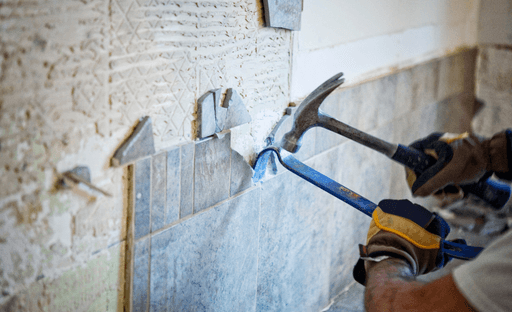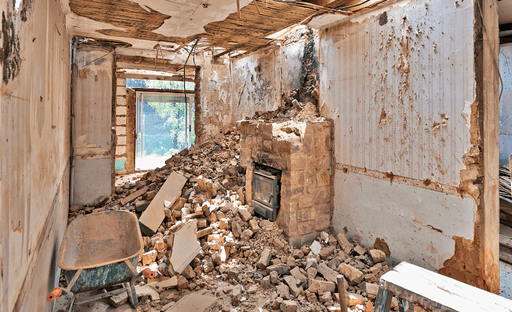Renovation vs. Remodeling: What’s the Difference?
If you’re planning to update or improve your home, you may have heard the terms renovation and remodelling used interchangeably. While both involve making changes to an existing structure or space, there is a distinct difference between them. Understanding the difference between renovation and remodelling can help you better plan and execute your home improvement projects.
Renovation
Renovation is the process of restoring or updating an existing structure or space to its original state or a state that is considered functional and aesthetically pleasing. Renovation projects typically involve making minor repairs, replacing outdated fixtures and finishes, and updating the overall look and feel of a space. Common renovation projects include repainting walls, replacing flooring, upgrading plumbing and electrical systems, and replacing countertops or cabinetry.
The goal of a renovation project is to update and improve an existing space while retaining its original character and charm. Renovation projects are often less expensive and less disruptive than remodelling projects and can be completed more quickly.
Remodelling
Remodelling involves making significant changes to an existing structure or space, often with the goal of improving its functionality, flow, and overall layout. Remodelling projects may involve removing walls, adding new rooms or features, changing the layout of a space, or completely gutting and redesigning an area.
The goal of a remodelling project is to transform existing space to better suit the needs and preferences of the homeowner. Remodelling projects are often more expensive and disruptive than renovation projects and can take longer to complete.
Which is Right for You?

Deciding whether to undertake a renovation or a remodelling project depends on your goals, budget, and timeline. If you’re happy with the layout and functionality of your space, but it could use a bit of a facelift, a renovation project may be the right choice for you. On the other hand, if you’re looking to completely transform your space and create a new layout that better suits your needs, a remodelling project may be the better option.
In either case, it’s important to work with a qualified and experienced contractor who can help you plan and execute your project while staying within your budget and timeline. Whether you’re renovating or remodelling, investing in your home can improve its value, functionality, and overall enjoyment for years to come.
What are the 3 types of renovation?
When it comes to renovations, there are various types that can be classified based on their scope and complexity. Here are three of the most common types:
Cosmetic renovation: This involves improving the aesthetics of a space without changing its structure or layout, such as repainting walls, replacing flooring/fixtures, upgrading lighting/window treatments, and adding decorative elements like crown moulding.
Functional renovation: This involves improving the space’s functionality and practicality without necessarily affecting its appearance, such as upgrading plumbing/electrical systems, installing new cabinetry or storage solutions, or reconfiguring space to better suit the homeowner’s needs.
Structural renovation: This type involves making significant changes to the structure of a space and may include adding/removing walls, building an addition, or converting an area into a livable space.
These renovations can be done separately or with a combination of approaches depending on the condition of the space and desired outcomes of the homeowner. Having knowledge about each type of renovation is vital in helping homeowners plan and execute their work efficiently to achieve their goals.
What qualifies as a renovation?
Renovation is the process of restoring or updating an existing structure or space to improve its appearance, functionality, or value. Unlike remodelling, renovation usually involves making changes without demolishing and rebuilding from scratch, such as updating kitchens/bathrooms, replacing floors, installing new windows/doors, repainting walls, upgrading plumbing/electrical systems, and adding/modifying room layouts and fixtures.
The scope and extent of a renovation project can range from simply repainting a single room to a complete overhaul of an entire home or building. The goals and needs of the homeowner or property owner should be taken into consideration when planning the project as well as the condition of the space being renovated.
Note that renovations may require building permits, zoning approvals, regulations or other approvals depending on the nature and scope of work. Homeowners and property owners should consult their local building department or qualified contractor to ensure that their renovation project abides by regulations and building codes.
What are the 4 types of remodelling?
There are different ways to categorize types of remodelling, but here are four common types of remodelling based on the areas of the home that are typically remodelled:
Kitchen remodelling: This type of remodelling focuses on updating or improving the functionality and appearance of the kitchen. A kitchen remodelling project may involve replacing cabinets and countertops, upgrading appliances, installing new flooring or lighting, or reconfiguring the layout of the space to better suit the homeowner’s needs and preferences.
Bathroom remodelling: This type of remodelling focuses on updating or improving the functionality and appearance of the bathroom. A bathroom remodelling project may involve replacing fixtures and fittings such as sinks, toilets, and showers, updating the flooring and wall coverings, and improving the storage and organization of the space.
Basement remodelling: This type of remodelling involves finishing or improving the functionality of the basement. A basement remodelling project may involve adding bedrooms, bathrooms, or living spaces, installing new lighting and flooring, or upgrading the insulation and waterproofing of the space.
Whole house remodelling: This type of remodelling involves making significant changes to multiple areas of the home, often with the goal of improving the flow and functionality of the space or updating its appearance. A whole house remodelling project may involve removing or adding walls to create an open floor plan, updating the electrical or plumbing systems, replacing windows and doors, or completely overhauling the interior and exterior of the home.
These four types of remodelling can be done separately or in combination, depending on the goals and needs of the homeowner and the condition of the home being remodelled. By identifying the type of remodelling needed, homeowners can plan and execute their projects more effectively, and achieve their desired outcomes more efficiently.
What is an example of renovation?
An example of renovation would be updating an old bathroom that is still in good structural condition but outdated in terms of style and functionality. Here are some examples of what a bathroom renovation might include:
Replacing old, worn-out fixtures such as the sink, toilet, and shower/bath with new ones that are more modern and efficient.
Installing new floorings, such as tile or vinyl, to update the look of the bathroom and improve its durability.
Upgrading the lighting to provide better illumination and create a more comfortable atmosphere.
Repainting or wallpapering the walls to refresh the look of the bathroom.
Adding new storage solutions, such as cabinets or shelves, to improve organization and maximize space.
Upgrading the plumbing and electrical systems to improve performance and efficiency.
The overall goal of a renovation project like this is to improve the appearance and functionality of the bathroom, without necessarily changing its layout or structure. A bathroom renovation project like this can be a great way to refresh the look and feel of a space, while also improving its functionality and efficiency.
In conclusion
while renovation and remodelling are often used interchangeably, there is a significant difference between the two. Renovation involves making minor updates or improvements to an existing structure, while remodelling involves more significant changes to the structure and layout of a space. Understanding the difference can help you better plan and execute your home improvement projects while achieving your desired goals and results.






